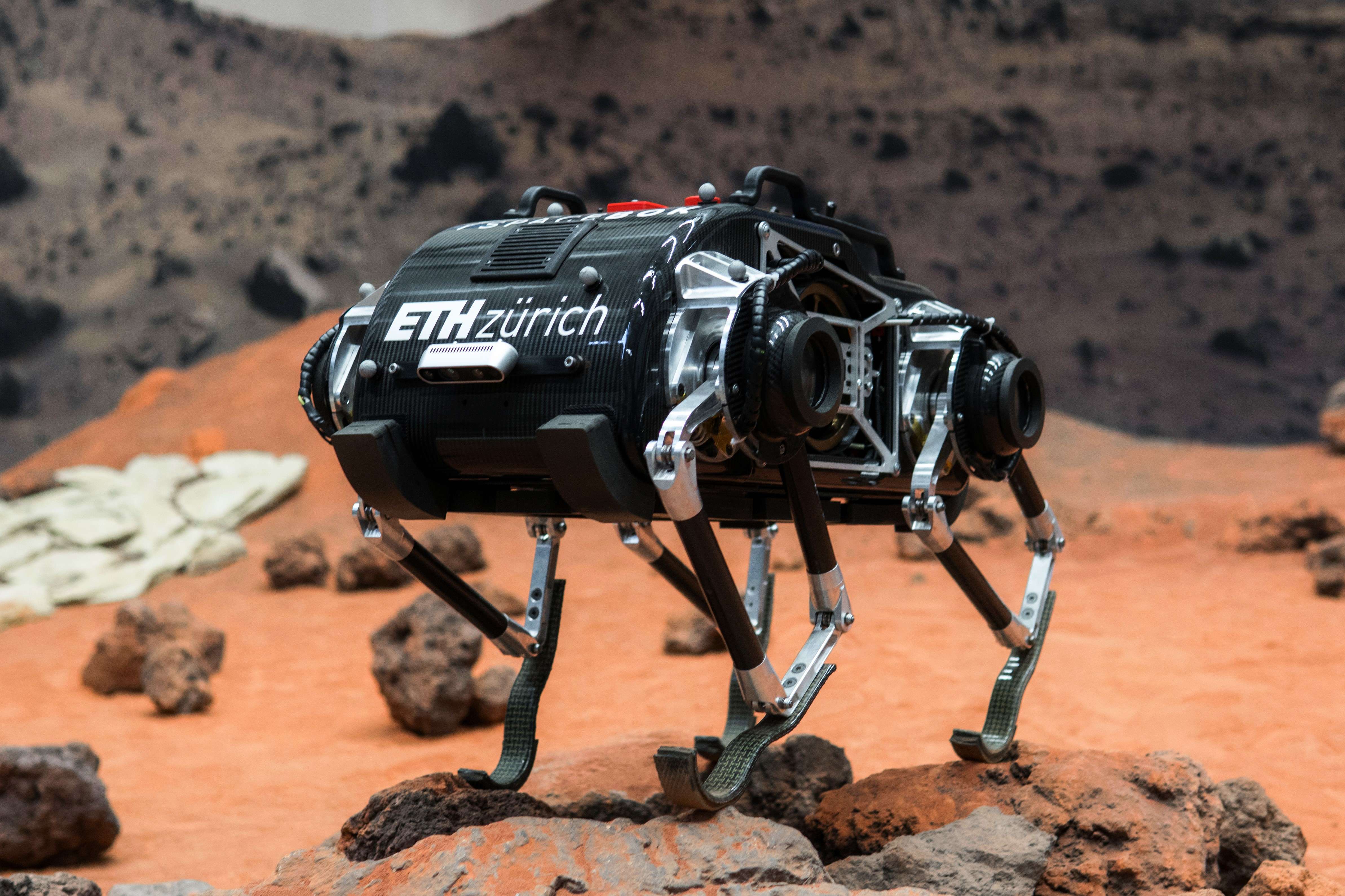Create a free profile to get unlimited access to exclusive videos, sweepstakes, and more!
Meet SpaceBok, the radical new rover built to jump around the Moon and Mars

Seeking to create a next-generation quadruped rover capable of jumping in low-gravity environments, the Swiss-based robotic labs at ETH Zurich and ZHAW Winterthur have engineered an agile exploratory vehicle named SpaceBok.
The ambitious SpaceBok team is comprised of 12 students from ETH Zurich and ZHAW Winterthur in Switzerland, whose varied fields of study encompass mechanical, electrical, and systems engineering. The student crew is operating under the direct supervision of Professor Marco Hutter and Ph.D student Hendrik Kolvenbach. Once deployed, this marching rover’s mechanical prowess could allow it to jump to a staggering height of 13 feet on the Moon.
One of the main goals of the project is to reimagine locomotion for space exploration in low gravity conditions experienced on the Moon or Mars. SpaceBok’s abilities include walking, hopping, and leaping over big obstacles. (Check out its moves in the European Space Agency's official introduction video HERE.)
Sandy, rocky, and steep, loose-soiled slopes seen via images returned from NASA’s Perseverance rover and previous Mars missions reveal that it could be challenging terrain for any four-legged robots. So SpaceBok has been undergoing a rigorous testing process this past year or two at the ESA's Mars Yard facility. This experimental Mars Yard ‘sandbox’ is fortified with various sizes of sand, gravel, and rock and is aligned with the Planetary Robotics Laboratory at the Agency’s ESTEC technical center in Noordwijk, the Netherlands.
SpaceBok, named after the hop-happy springbok antelope, has now scored a major Mars upgrade for potential off-road service on the Red Planet, according to Wired. Specially adjusted, less-springy gaits and different styles of swap-out feet could greatly aid SpaceBok’s planetary performance.
“We wanted to show that these dynamically working systems nowadays, they can actually walk on the Martian sand,” ETH Zurich roboticist and lead study author Hendrik Kolvenbach told Wired. “This is a technology that has a lot of potential now for the future.”
To test the rover under rough Red Planet conditions, researchers equipped versions of SpaceBok with two types of feet: point and planar. Point feet have a reduced surface area similar to the hoof of a real antelope. Planar feet are flat swiveling circles that bend when each pod foot contacts the ground, almost like a small snowshoe with built-in cleats for more traction.
After being fitted with shiny new shoes, the team unleashed SpaceBok into a huge tilted sandbox filled with varied material that simulates Martian soil. This let the scientists determine whether or not any of those configurations helped it ramble up a 25-degree plane.
“One of the surprise findings was that the point feet were not performing so bad on this particular slope, because of that high sinkage,” Kolvenbach said. “Basically, they provide quite a stable stance.”
The flat feet apparently performed worse due to increased slippage. It was determined that the best design fits somewhere between the two different designs.
For now, the team will continue to develop and fine-tune SpaceBok for future ESA and NASA missions, where these new methods of exploring and traversing terrain might be of benefit when wheeled autonomous rovers fail to make the grade in slippery, adverse conditions.
“Legged robots might not replace wheeled robots in space,” says roboticist Tønnes Nygaard of the Norwegian Defence Research Establishment to Wired. "But they could definitely bring a valuable contribution and take an important role in the team.”













